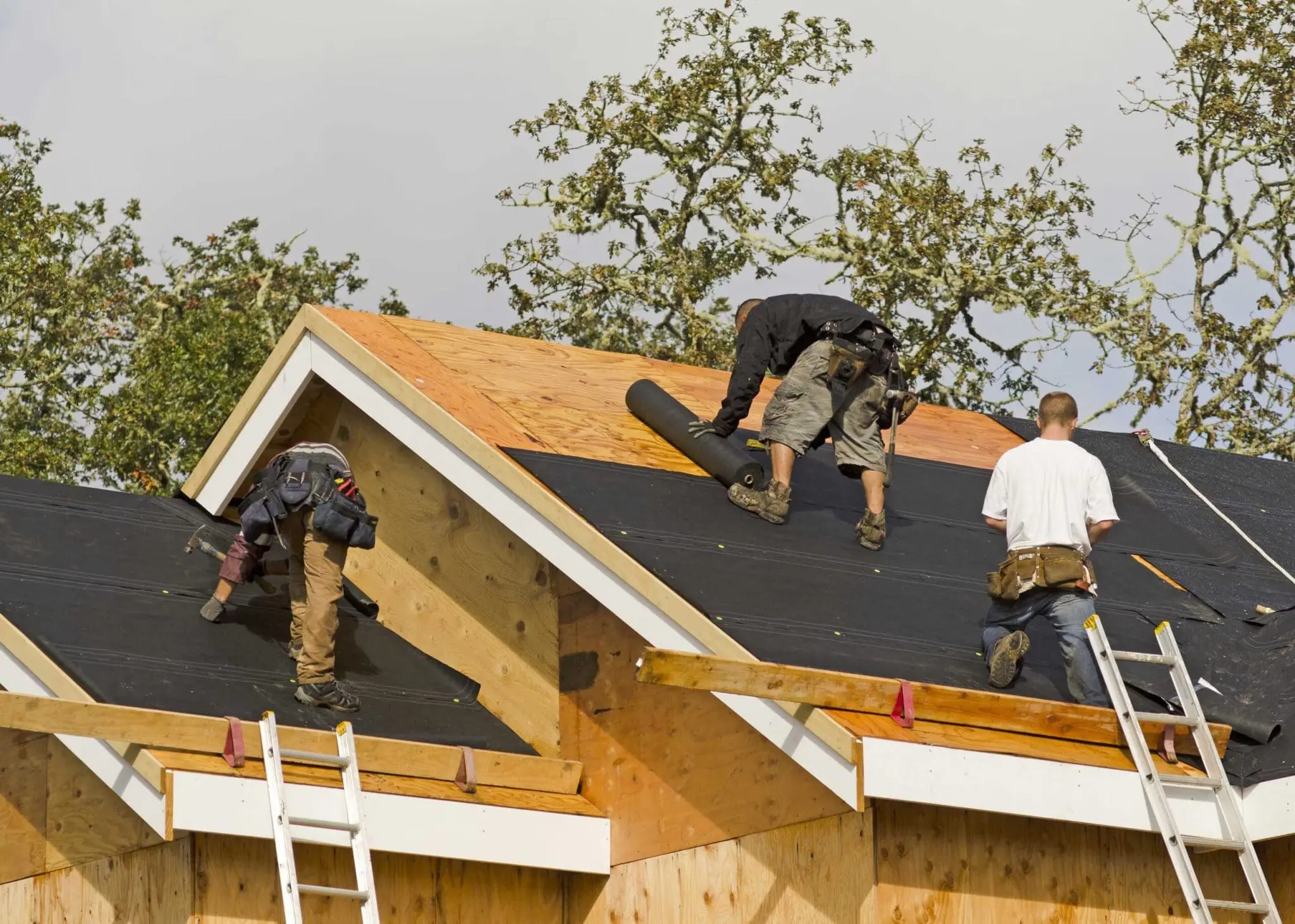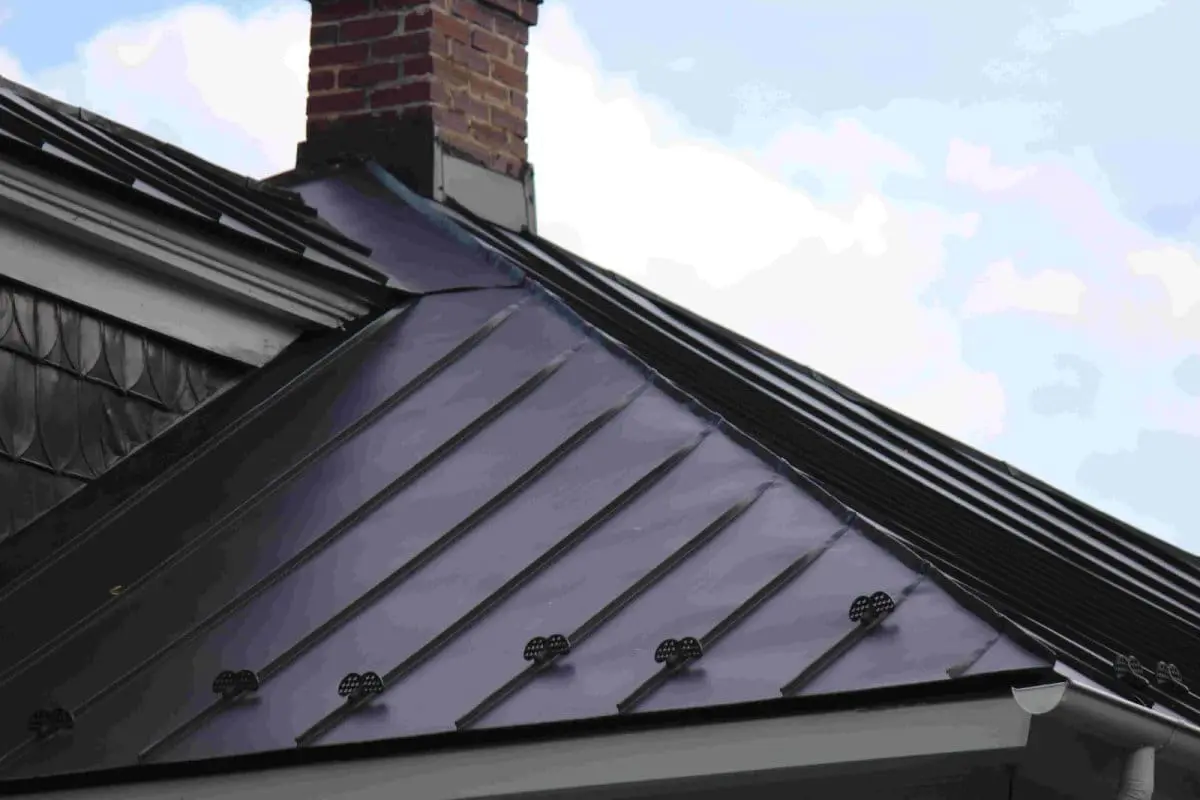How much weight can a roof hold? That depends on various factors, including construction materials, roof design, and regional weather patterns. For instance, typical residential roofs are designed to hold at least 20 pounds per square foot.
This guide will walk you through how these factors interact, specific weight guidelines for various scenarios, and how to evaluate your roof’s current capacity in terms of “how much weight a roof can hold.”
Key Takeaways
- Roof load-bearing capacity is critical for structural safety and must account for factors like age, condition, and dead/live loads from permanent fixtures, snow, or maintenance activities.
- The integrity of a roof relies on its support system of trusses and beams, quality materials, and proper installation. Together, these ensure weight is evenly distributed and that the roof can withstand the stress from environmental factors and live loads.
- Residential and commercial roofs differ in design and load-bearing standards. Commercial roofs are built to support heavier loads and are subject to specific safety guidelines, while residential roofs are engineered for standard household demands and have the potential for green roof additions.
Evaluating Roof Load-Bearing Capacity: Key Considerations
Understanding the weight-bearing capacity of your roof is not merely a matter of curiosity but a foundational aspect of structural safety. Whether you own a quaint suburban home or a sprawling commercial complex, the integrity of your roof is paramount. While most roofs are engineered to withstand the typical stresses of their environment, factors such as age, condition, and any modifications can significantly alter their load-bearing abilities.
It’s a game of balance, and professional roofers’ knowledge and expertise are crucial to accurately assess the true strength of your roof’s structure.
Identifying Dead Loads on Your Roof
Perched atop your building, dead loads are the silent constants of the roofing world. They comprise the weight of the roofing materials themselves and any permanent fixtures, like those hulking HVAC units or the subtle elegance of solar panels. It’s a weight that never wavers, always pressing down with the same force, day in and day out.
Understanding these persistent pressures is vital when assessing your roof’s load-bearing capacity.
Calculating Live Loads Above You
In contrast to the steadfast dead loads, live loads are the transients, the come-and-go of weights that your roof may only occasionally support. Imagine a winter’s blanket of snow or a cluster of maintenance workers scurrying about; these are the live loads that ebb and flow with the seasons and activities.
A typical residential roof, also known as an average roof, must flaunt its strength, being able to support at least 10 kilograms per square foot to cater to these live loads. This answers the question of how much weight a roof can handle.
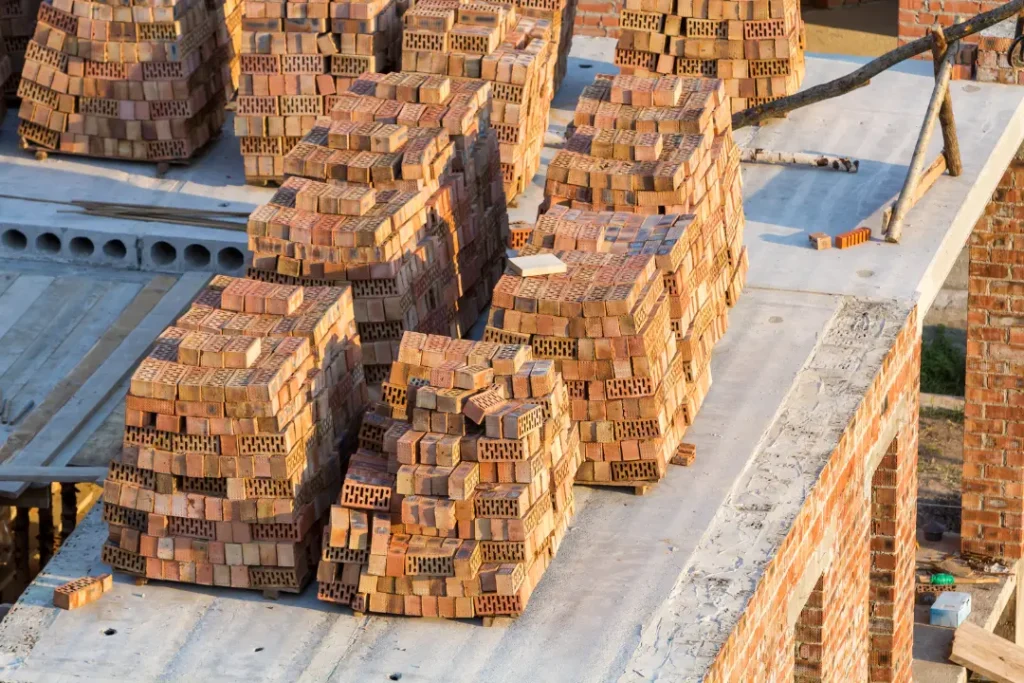
Assessing Environmental Impact on Roof Strength
The capricious nature of the environment also plays its part in challenging your roof’s strength. Snow, for example, can accumulate and exert an immense environmental load, pushing the limits of what your roof can handle. Regions well-acquainted with the perils of heavy snowfall have specific load limits in place to ensure that roofs can stand up to Mother Nature’s whims.
Ice dams, those treacherous ridges at the roof’s edge, are not merely a nuisance; they signal potential insulation issues and can lead to water damage, further compromising roof strength.
Roof Support Systems Explained
The skeleton beneath your roof’s skin, the support system, shoulders the weight of the roof itself and the additional loads it bears. Trusses and beams form this critical infrastructure, working in unison to uphold the roof’s integrity and ensure the safety of all beneath it.
Without a well-designed support system, a roof’s interior structure is a precarious canopy, vulnerable to weight and weather.
The Role of Trusses in Weight Distribution
Think of trusses as the diligent distributors of weight, the hidden heroes maintaining equilibrium throughout your roof’s expanse. These triangular marvels ensure that weight is not a burden borne by a single point but shared across the structure, minimizing stress and maximizing stability. Trusses are the foundation of a roof’s resilience, engineered to shoulder diverse loads, from the stillness of dead loads to the dynamism of live loads.
They are meticulously designed to prevent concentrated stress, spread the weight evenly, and protect your roof from structural damage. And when the demand calls for it, reinforcing the truss system can amplify your roof’s load-bearing prowess.
Importance of Proper Installation and Materials
The choice of roofing materials and the quality of installation are not to be taken lightly. High-quality materials bring strength and longevity to the table, fortifying your roof against the elements and the test of time. A professionally installed roof is made to last, and its performance is fine-tuned to maintain load capacity even as the years pass by.
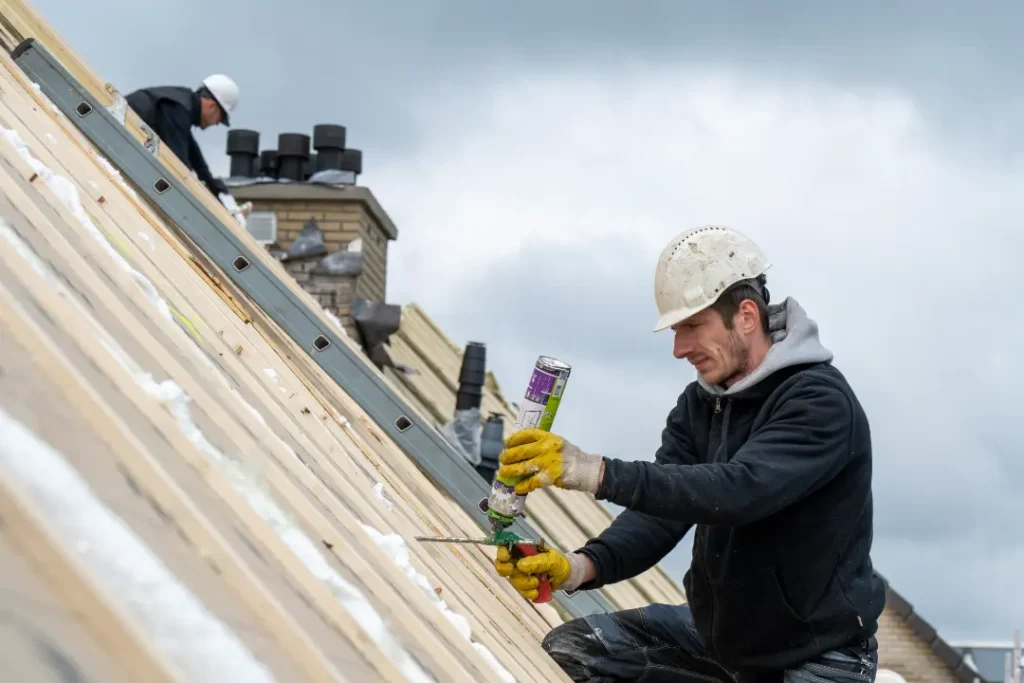
It’s about making the right choices, from the types of rafters to the beams’ dimensions and even the strategic enhancements like hurricane straps that can bolster a roof’s resolve against formidable forces like wind.
Residential vs. Commercial Roofing Dynamics
The roofing landscape is diverse, with residential roofs sporting gable or hip designs often sheathed in asphalt shingles for their aesthetic charm and cost-efficiency. In contrast, commercial roofs are built to different standards, with flat or low-slope designs that cater to more significant buildings and the heavy-duty equipment they house.
These roofs shoulder more critical responsibilities, and thus, the load-bearing standards are heightened to ensure structural safety and accommodate the heavyweight demands of commercial activities.
Special Requirements for Commercial Flat Roofs
Commercial flat roofs are the unsung workhorses of the roofing world. They are designed to support heavier live loads and meet specific concentration standards for safety. From helipads demanding uniform weight distribution to the intricate requirements of heavy HVAC systems, commercial flat roofs must conform to stringent guidelines.
This includes sustaining a minimum live load of 60 pounds per square foot and a concentrated load of 3,000 pounds for larger equipment, ensuring that safety and structural integrity are never compromised during a flat roof hold.
Understanding the weight capacity of a commercial flat roof is not just about installation; it’s about ensuring safety in every facet of maintenance and use.
Understanding Your Home’s Roof Support Capabilities
Shifting our gaze to the residential realm, the roofs that crown our homes are engineered with different expectations in mind. They are built to endure the typical weight limits that come with standard household fixtures, easily accommodate the occasional maintenance activity, and often have a flat roof intended for such purposes.
For those who dare to dream a little greener, a home garden atop your roof might be within reach, provided your roof can handle the additional 45 kg per square foot that such an oasis demands, similar to how much snow it should withstand.
Maximizing Your Roof’s Load-Bearing Potential
Strategic upgrades and reinforcements can elevate your roof’s weight-bearing capacity. In the modern age, where innovation and engineering intersect, heavy-duty materials and robust designs pave the way for roofs that can shoulder more weight than the average load.
Upgrading to Heavy-Duty Roofing Material
The transformation from an ordinary roof to a bastion of strength starts with the construction materials it’s made of. Metals like steel, aluminum, and other composites offer a superior weight-bearing capacity compared to traditional asphalt shingles. Lightweight yet formidable, metal roofing materials such as standing seam metal provide a reliable foundation to support significant weight without straining the structure beneath.
The choice of roofing material is a critical decision that influences the roof’s ability to support weight and its durability and resilience in harsh weather.
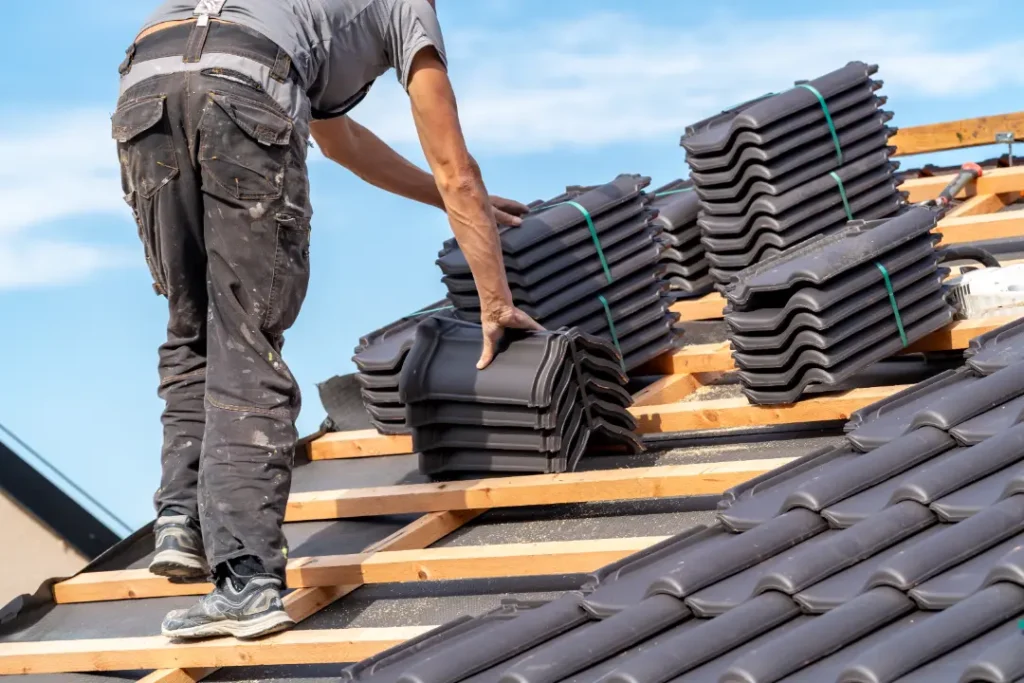
Enhancing Structural Integrity with Additional Supports
The strength of a roof, however, is not determined by its covering alone. The framework below, the trusses and rafters, can be fortified to uplift a roof’s stability and weight tolerance. Hurricane tie-downs, for instance, can anchor trusses more securely to the walls, enhancing the roof’s ability to withstand additional loads, be it a new HVAC system or the wrath of a storm.
It’s a matter of strategic reinforcement, where applying construction adhesives and carefully designing additional supports can transform a roof’s load-bearing destiny.
Safe Roof Maintenance Practices
The upkeep of a roof is not just about preserving its appearance; it’s about ensuring its structural integrity and load-bearing capability. Safe roof maintenance practices are a tapestry of caution, expertise, and the appropriate use of safety gear.
Ensuring Safety When Adding Weight
Adding weight to a roof, whether through new installations or festive decorations, must always be done with an eye on safety. The modern roof should gracefully support the weight of multiple persons, provided such activities are conducted by professionals equipped with the proper safety gear.
Regular maintenance, such as gutter clearing, prevents additional weight from water accumulation and safeguards the roof from undue pressure.
Regular Inspections for Optimal Performance
Continual vigilance is the key to a roof’s longevity and performance. Regular inspections by professional roofers can detect early signs of wear and tear and address them before they escalate into major concerns. Such inspections are not just a preventive measure; they are a testament to the commitment to safety and the enduring load-bearing condition of the roof.
Key Takeaways: How Much Weight Your Roof Can Safely HoldSummary
From the silent strength of dead loads to the dynamic challenges of live loads, understanding the weight-bearing capacity of your roof is a journey of discovery and diligence.
Whether through the strategic upgrade of materials or the meticulous reinforcement of trusses, the potential to maximize your roof’s capacity is vast. Safe maintenance practices and regular inspections guard your roof’s integrity, ensuring it stands as a reliable shield against the forces that seek to test its mettle.
Let the insights gleaned from this exploration guide fortifying this critical building component, and may your roof always rise to the occasion.
Frequently Asked Questions
How much weight can the average residential roof support?
The average residential roof can support 10 to 20 pounds per square foot of dead loads, but this capacity may vary based on age and condition.
Are there specific load limits for commercial flat roofs in heavy snow regions?
Commercial flat roofs in heavy snow regions have specific load limits to ensure safety and structural integrity.
What role do trusses play in a roof’s structure?
Trusses distribute the roof’s weight evenly across their members, accommodating various loads and minimizing stress. This helps ensure the stability and longevity of the roof structure.
How can I increase my roof’s load-bearing capacity?
To increase your roof’s load-bearing capacity, consider upgrading to heavy-duty materials, reinforcing roof trusses, and adding supports such as hurricane tie-downs. This will help improve the overall strength and resilience of your roof.
What safety measures should be taken when adding weight to a roof?
When adding weight to a roof, it’s crucial to prioritize safety by using harnesses, providing secure access with suitable ladders, and conducting regular maintenance for even weight distribution.
Disclaimer:
The content in this blog is for informational purposes only and is intended to assist homeowners in understanding roofing, siding, windows, gutters, shutters, and general home improvements. Xterior LLC advises against attempting any of the tasks described here, as they require professional expertise. We do not assume liability for any injuries, damages, or losses resulting from DIY attempts. Always refer to the manufacturer of products for specific maintenance instructions.
By viewing this blog, you acknowledge and release Xterior LLC from any and all liability related to the use or misuse of the information provided.
Please note that Xterior LLC may not offer all the services discussed. Repairs, estimates, and inspections are priced based on availability, location, and time. All services, offerings, and prices are subject to change without notice.
For more information or to request services, please contact Xterior LLC directly.


